Ornamental banana
Ornamental banana plants are a beautiful way to create an exotic tropical haven in your garden, and you can do this wherever your garden is located. With their big leaves and bold style you will enjoy growing the ornamental banana plant. Here is how to select the best plant for you and how to care for them as well as my list of desirable varieties for you to choose from.
Origins of the Ornamental Banana
Ornamental banana plants belong to the genus Musa, which includes both fruit-producing and non-fruit-producing species. These plants are native to Southeast Asia and the South Pacific, with a history of cultivation dating back thousands of years.
How to Choose your Best Ornamental Banana Tree
What is an “Ornamental” Banana?
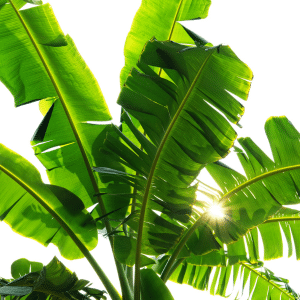
An ornamental banana tree is a tropical plant grown primarily for its striking foliage and exotic flowers rather than for edible fruit. Despite the name, it’s not a true tree—it’s a large herbaceous perennial, meaning it lacks a woody trunk and is more closely related to plants like gingers and heliconias.
These plants typically feature:
- Large, paddle-shaped leaves that create a lush, tropical vibe.
- Colorful flowers in shades of pink, red, or yellow, depending on the variety.
- Non-edible fruit (if any), the fruit is often small and seeded.
There is an Ornamental Banana ‘Tree” for Your Climate
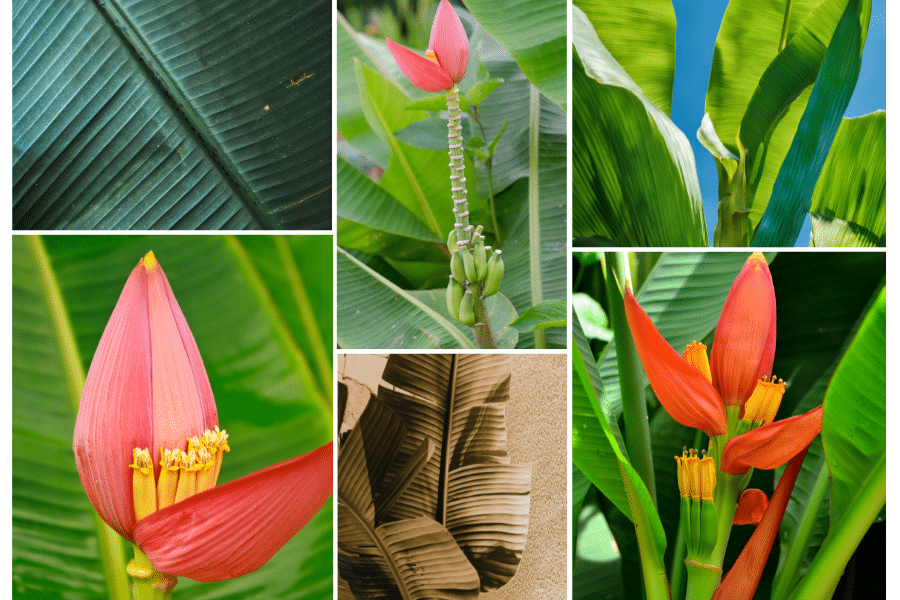
Although called banana “trees,” these plants are normally large, herbaceous perennials that can add drama to any landscape. First, consider your local climate. In cooler regions, you’ll want a cold‐hardy variety such as the Japanese Banana (Musa basjoo), which can survive winter temperatures down to USDA zone 5 when its roots are well protected with mulch. If you live in warmer areas, varieties like Bordelon (which thrives in USDA zone 8 and above) can be excellent choices. Your selection should also consider the plant’s mature size and whether you plan to grow it in the ground or in a container. You will find a choice of plant sizes to suit your needs.
Can I Grow My Ornamental Banana in A Container?
Yes, and this will allow you to bring your plant indoors for protection from cold. Your choice of variety will impact your success too.
Growing an ornamental banana in a pot is an option; and it brings a lush, tropical feeling to patios, balconies, or even sunny indoor corners. Here’s how to make your potted banana plant thrive:
Choose the Right Variety
These three will remain compact and are well suited for container growth.
Select from Dwarf Varieties such as these:
- Musa velutina (Pink Banana)
- Musa basjoo (cold-hardy)
- Musella lasiocarpa (Golden Lotus Banana)
Ornamental Banana Varieties to Choose From
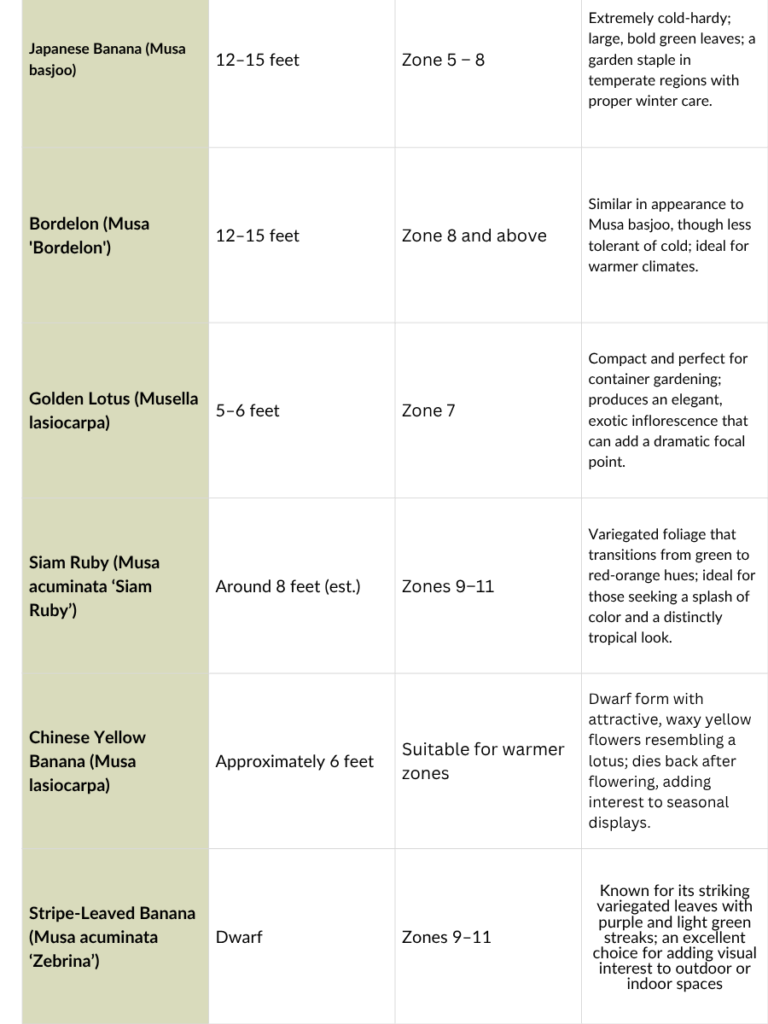
Growing Your Ornamental Banana
Selecting Your Container and Soil
Container Size: Start with a container at least 18–24 inches wide and deep. Bigger is better as the plant grows.
- Drainage: Ensure the pot has good drainage holes.
- Use a well-draining mix—a blend of peat moss, perlite, and compost works well.
How to choose the best potting soil
Good garden soil for your ornamental banana.
Light & Temperature
- Needs bright, indirect sunlight; at least 6 hours a day.
- Our banana plant prefers warm temps (70–85°F / 21–29°C). Protect from frost!
Watering & Humidity
- Keep soil consistently moist, but not soggy.
Feeding & Care
Mist the leaves or use a humidity tray if your air is dry.
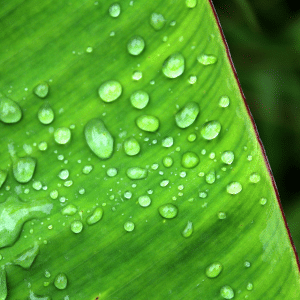
Fertilize your ornamental banana plant monthly with a balanced or high-nitrogen fertilizer during the growing season.
Remember to remove any dead leaves and prune suckers if you want a single-stem look.
Winter Tips
If you’re in a cooler climate, bring the pot indoors before the first frost. It may go dormant, so reduce watering and do not feed until spring.
Site and Soil Preparation:
Light Conditions: These plants thrive in full sun to bright, indirect light. Aim for at least 6–8 hours of sunlight daily to ensure vibrant foliage.
Your Best Soil: Use a well-draining soil rich in organic matter. A mix that includes compost will help retain moisture without becoming soggy.
Planting: Dig a hole a little wider than the plant’s root ball, mix in organic compost, and set the plant at the same depth as it was in its nursery container. Water thoroughly to settle the soil around the roots.
Water and Fertilizer
Water: Ornamental bananas are thirsty. They typically need about 1–2 inches of water per week, though you should adjust depending on rainfall and your soil type. Keep the soil evenly moist but not waterlogged.
Fertilizer: Feed your banana tree with a balanced, slow-release fertilizer during the active growing season (spring through summer). Regular feeding will support their rapid growth, especially in containers where nutrient levels can decline quickly.
Temperature and Winter Protection:
If you’re in a colder area, protect the root zone during winter. Mulching heavily around the base can insulate against freezing temperatures. In regions where even hardy varieties might suffer, consider growing your plant in a large pot so you can move it indoors or into a sheltered area during severe cold snaps.
Here is how to read USDA Plant Hardiness Zone Maps. These maps, show the growing zone in which your garden is located, compare that to the hardiness label on any plant you are considering growing and you can find plants with a good chance of success in your garden.

Maintenance and Propagation:
Pruning: Remove dead or damaged leaves to maintain a tidy appearance and prevent disease. Pruning can also help keep the plant at a manageable size.
Division: Over time, your ornamental banana will produce offshoots or suckers. These can be carefully separated and replanted to propagate new trees, ensuring that you multiply your tropical ensemble while maintaining the health of the main plant.
When you find pups or new offshoots, that are six to eight inches long, use a serrated knife and cut them from the parent plant. Start these new plants, each in its own small pot.
Companion Plants
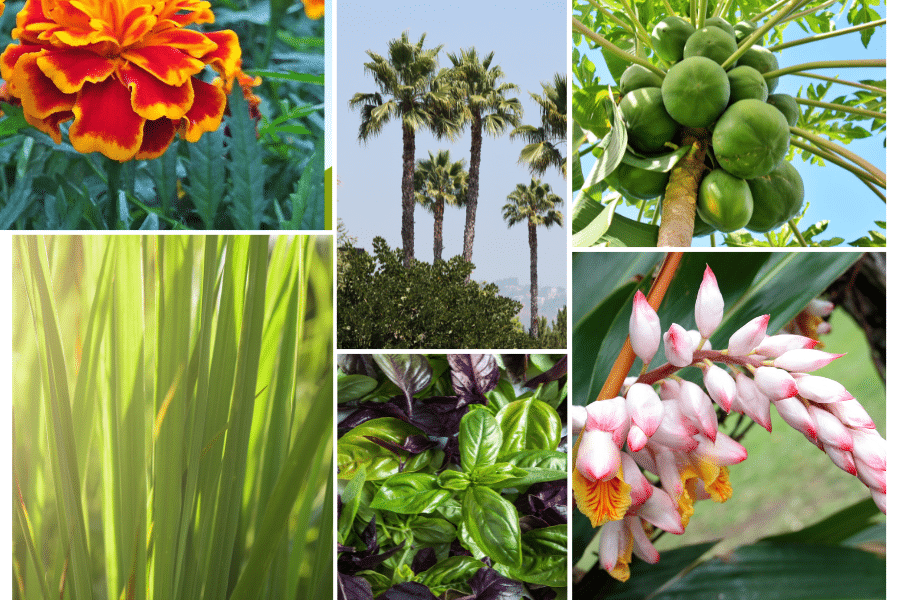
Ornamental banana plants are happy in company, especially the kind that helps them thrive while adding beauty and biodiversity to your garden. Here’s a curated list of great companion plants that pair well with them:
Flowering Companion Ideas
- Marigolds: Repel pests like nematodes and aphids while attracting pollinators.
- Nasturtiums: Act as a trap crop for aphids and add edible color to your garden.
- Hibiscus (Roselle): Creates the same tropical atmosphere and adds color while growing in the same conditions.
Herbs & Aromatics
- Lemongrass: Deters mosquitoes and other pests with its citrusy scent. A fast grower it will add a new linear texture.
- Basil: Repels flies and enhances the flavor of nearby plants.
Structural Companions
- Papaya: Fast growing trees of varying size they provide dappled shade in warm climates and attract beneficial insects to the garden.
- Palm trees: Provide partial shade and vertical interest in layered plantings. Sizes and appearance will vary widely.
- Ginger: Ginger (Zingiber officinale) is a flowering plant whose rhizome, ginger root or ginger, is widely used as a spice. Also, the plant shares similar growing conditions and helps suppress weeds. Ginger plants are available in various sizes.
These companions not only support your banana plant’s health but also create a vibrant, layered garden that feels like a mini jungle retreat. Want help designing a layout or choosing based on your climate?
Summary,
Growing an ornamental banana tree is not just about planting a beautiful specimen—it’s about creating a dynamic, tropical atmosphere in your garden or patio. Whether you opt for the robust Japanese Banana for its hardiness or the ever-elegant Golden Lotus for a container setting, the key is providing ample sunlight, regular watering, and a nutrient-rich environment. With proper care, your banana tree can serve as a vibrant focal point, evoking feelings of summer all year long.
Happy Digging,
